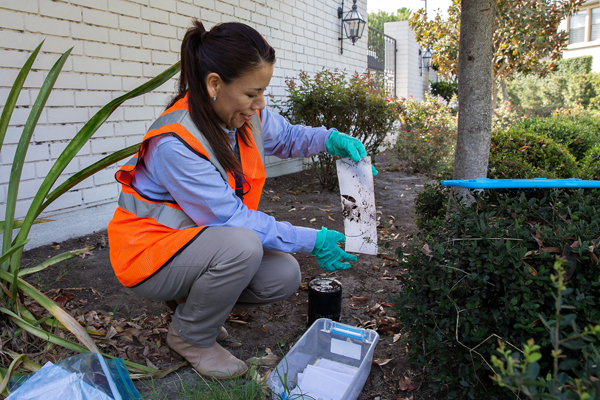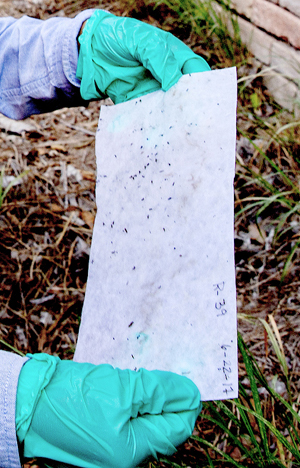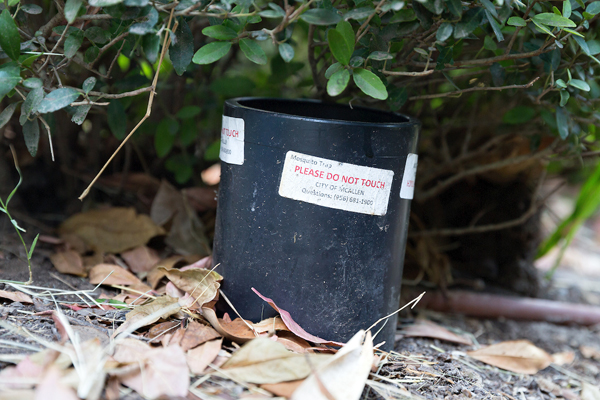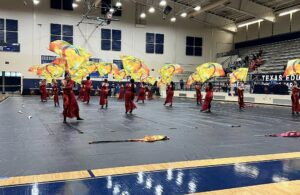- La Feria Community Holds Succesful Business Mixer Event
- Little Nashville to Take Place in Downtown Mercedes
- Lions Basketball Captures District Gold
- La Feria ISD Students Compete in Regional Chess Tournament
- Lions End First Half of 32-4A on a High Note
- La Feria ISD Held Another Successful Parent Conference
- Strong Appearance for Lions at Hidalgo Power Meet
- LFECHS Students Get to Meet Local Actress
- Students Participate in Marine Biology Camp
- Two LFECHS Students Qualify for All-State Band
UTRGV Students Participate in Binational Zika Research Program to Monitor Border’s Mosquito Population
- Updated: July 14, 2017

Consuelo Aguilar, a senior biology student at UTRGV, collecting samples of mosquito eggs and larvae in a south McAllen neighborhood. The samples that she collects will be given to the CDC where they will analyze the data and use it to address mosquito-borne illnesses. Photo: Paul Chouy/UTRGV
by J. Edward Moreno
RIO GRANDE VALLEY, TEXAS – Six students from The University of Texas Rio Grande Valley are helping with research to combat Zika and other mosquito-borne illnesses on the Texas border with Mexico.
Earlier this year, UTRGV announced its partnership with the Centers for Disease Control and Prevention (CDC), U.S. Department of Agriculture, and Mexico’s National Center of Preventive Programs and Control of Diseases (CENAPRECE), to establish a binational effort for researching and combating the Zika virus and other mosquito-borne illnesses.
Dr. Patricia Feria-Arroyo, the UTRGV associate professor of biology who is leading the project, said the collaboration is imperative.
“Diseases don’t respect borders, so it is important that these two countries work together to fight this issue,” she said.

These paper filters – from mosquito larvae traps set as part of a research project under the guidance of UTRGV Biology Associate Professor Dr. Teresa Feria-Arroyo – yields critical information about the area’s mosquito larvae population to combat Zika and other mosquito-borne illnesses. Photo: Paul Chouy/UTRGV
The project led off with a workshop Feb 6-7, where epidemiologists and health officials from 11 states in both Mexico and the United States planned a pilot program to monitor virus-carrying mosquitoes – such as the Aedes Aegypti and Aedes Albopictus – commonly found in the Rio Grande Valley.
Since then, the group of six bilingual UTRGV students have been working with Feria-Arroyo to survey specified areas in McAllen and collect data using a method adopted by CENAPRECE.
“We are trying to emulate the most successful monitoring program for the surveillance of mosquitos used in Mexico, and do a pilot program here in the United States,” Feria-Arroyo said.
The research involves positioning “traps” in mosquito-dense areas and regularly monitoring the quantity of eggs and larvae found in the traps.
THE BIG PICTURE
Students say the project has been a truly unique experience.
Marcelo Pintos, 19, a sophomore biology major at UTRGV, said working with such large national entities really puts the work they are doing into perspective.
“What excited me is how the results that come out of this project are going to determine how the rest of the United States combats this problem,” Pintos said. “Working with the CDC and CENAPRECE really makes us feel like we’re a part of something big.”
Jair Castro, 25, senior biology major at UTRGV, said the partnership between the two countries comes as a pleasant reminder of the comradery typical of Valley border communities.
“It is refreshing to know that there is research going on in the Valley that helps joins both Mexico and the United States,” Castro said.
Students will continue their research throughout the summer, and their findings will be used by the CDC in its efforts to address mosquito-borne illnesses.

Shown is a mosquito larvae trap hidden under a bush as part of a research project under the guidance of UTRGV Biology Associate Professor Dr. Teresa Feria-Arroyo. Photo: Paul Chouy/UTRGV


